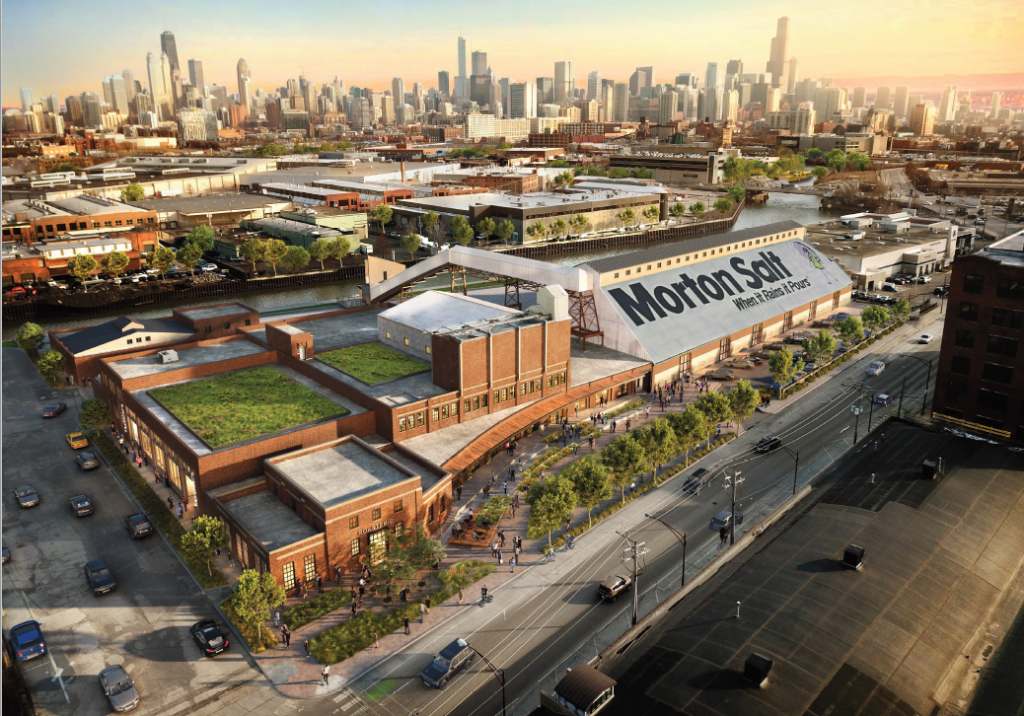Walking, biking, and running along the Chicago River near Goose Island is about to become more attractive with the redevelopment of the Morton Salt facility on Elston Avenue.
A well-known landmark on the North Side, Morton Salt has long occupied a 4.25-acre property located on the west bank of the Chicago River — running south from Blackhawk Street on Elston Avenue.
Led by developer R2 Companies, the project will turn the site into a mixed-use office, retail, and entertainment complex, providing another attractive destination along a continuous Chicago River Trail. The so-called Salt District is expected to be completed in 2020.
We’re pleased the plan includes separated paths for people walking and biking, adding more trails along the North Branch. These paths will also connect to a new pedestrian bridge over the river at Blackhawk Street that’s in the North Branch Framework Plan.
The trails will create easy access for people on foot and bike to the nearby Wild Mile Chicago, a 17-acre floating park coming to the North Branch Canal. The trails at this development also will eventually connect to riverfront trails at Lincoln Yards that’ll run between North and Webster Avenues.
Getting to the Salt District on bike will be relatively easy thanks to the bike lanes on Elston Avenue. And if you’re coming from the west, you’ll be able to get within a quarter mile of it by using the Bloomingdale/606 Trail.
The project will also add a water taxi stop and a boat launch.
R2 Companies recognizes the potential of the project to increase connectivity in Goose Island.
“The Salt District is a legacy project for everyone here at R2. We have worked closely with the city to ensure the project will become an economic and cultural keystone in Chicago’s emerging North Branch Cooridor,” said Zack Cupkovic, R2’s director of special projects. “We are excited to expose the property to the public and create a node that will connect bike, vehicle, and boat traffic in the area.”
As trails continue to emerge along the river, it’s important that we build public-private partnerships to ensure paths eventually connect to one another and are designed with the vision of a continuous river trail in mind.
As Chicagoans demand more off-street trails, opportunities exist to leverage ongoing development near the river and create a trail system that benefits communities all along the river and across Chicago.
To achieve this goal, Active Trans formed a Chicago River Trail coalition. This coalition allows our partners to come together to address a wide range of issues related to the development and building of the trail. One of its primary goals is to work with developers on their riverfront projects.
If you’re involved with an organization that you think could benefit from being involved in the Chicago River Trail Coalition, please encourage the staff to join. Organizations can join by contacting Steve Simmons, [email protected], (312) 216-0472.
If you haven’t already, please join the Chicago River Trail campaign to stay up on the latest news.
Image courtesy of R2 Companies

